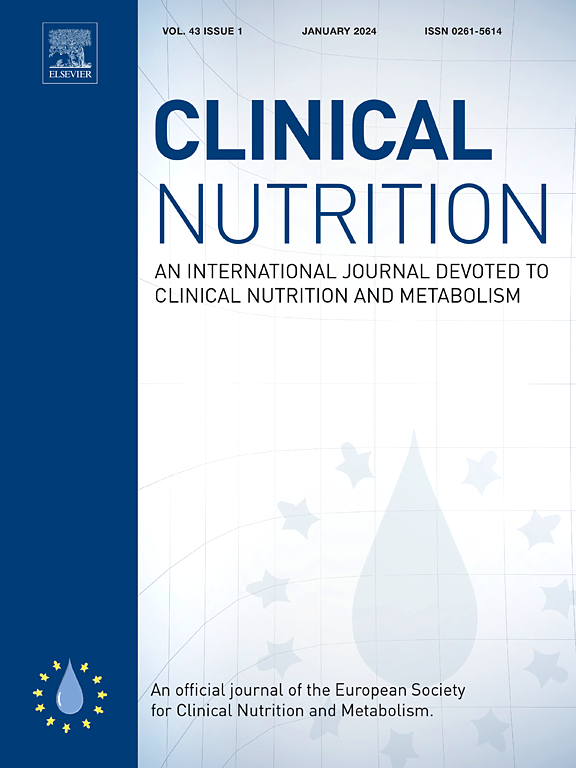Plasma amino acid profiles and gestational diabetes mellitus risk: A case-control study
IF 6.6
2区 医学
Q1 NUTRITION & DIETETICS
引用次数: 0
Abstract
Background & aims
Gestational diabetes mellitus (GDM) is a prevalent pregnancy complication associated with adverse short-term and long-term health outcomes for both mother and child. This study aimed to investigate the association between plasma amino acid concentrations and the incidence of GDM from 2019 to 2021.
Methods
Plasma levels of 37 amino acids were precisely measured using triple quadrupole mass spectrometry. The principal component analysis (PCA) and orthogonal partial least squares discriminant analysis (OPLS-DA) models identified metabolic differences between GDM and non-GDM groups. Conditional logistic regression, generalized linear model, and quantile g-computation were employed to assess the associations between individual or combined amino acids and GDM risk/blood glucose levels. The discriminatory power of various factors associated with the risk of GDM was evaluated using the area under the receiver operating characteristic curve (AUC–ROC).
Results
A total of 969 pregnant women were included in this case–control study. OPLS-DA model identified 16 biomarkers that differentiated the GDM and non-GDM groups. After adjusting for potential covariates and correcting for multiple testing, conditional logistic regression analysis revealed that certain key amino acids, such as valine and isoleucine, were positively associated with the incidence of GDM, while glycine and serine were negatively associated with GDM risk (OR = 0.753–1.671, Pfdr = <0.001–0.001). Generalized linear model analysis showed that specific amino acids, including alpha-aminoadipic acid and arginine, were positively associated with blood glucose levels, while glycine and serine were negatively associated (β = −0.211–0.365, Pfdr = <0.001–0.045). Additionally, mixtures of the identified amino acids were significantly associated with an increased risk of GDM (P < 0.001). The combination of selected amino acids showed the highest ability to identify GDM in comparison with traditional risk factors and specific amino acids (AUC-ROC = 0.761, 95 % CI: 0.729–0.792). The Kyoto Encyclopedia of Genes and Genomes (KEGG) analysis identified two metabolic pathways related to GDM risk: “Glycine, Serine, and Threonine Metabolism” and “Arginine biosynthesis”.
Conclusions
The overall amino acid profile, rather than disturbances in specific amino acids, may serve as a more important prevention or therapeutic target for GDM.
求助全文
约1分钟内获得全文
求助全文
来源期刊

Clinical nutrition
医学-营养学
CiteScore
14.10
自引率
6.30%
发文量
356
审稿时长
28 days
期刊介绍:
Clinical Nutrition, the official journal of ESPEN, The European Society for Clinical Nutrition and Metabolism, is an international journal providing essential scientific information on nutritional and metabolic care and the relationship between nutrition and disease both in the setting of basic science and clinical practice. Published bi-monthly, each issue combines original articles and reviews providing an invaluable reference for any specialist concerned with these fields.
 求助内容:
求助内容: 应助结果提醒方式:
应助结果提醒方式:


